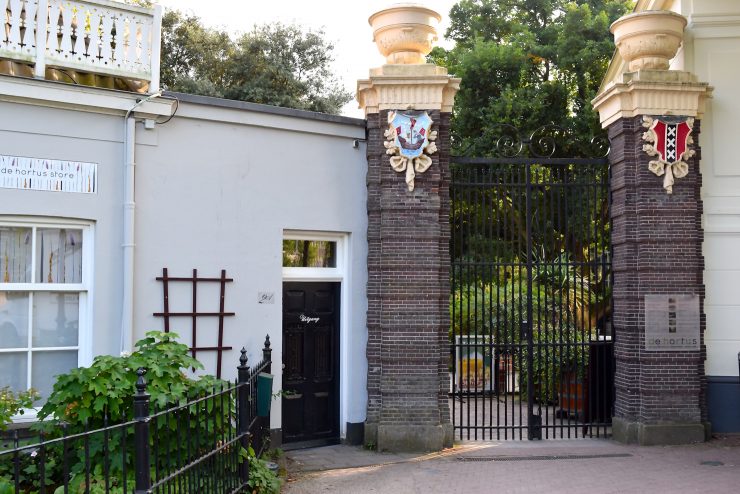 You may remember from social studies class that it was the Dutch who first brought coffee to Europe in quantity. But did you also know of the pivotal role Amsterdam played in coffee’s circulation not just on the Continent but around the world? I only learned this once I was living a bike ride away from what turns out is the plant’s historical hotbed: Hortus, the botanical garden of the Dutch capital.
You may remember from social studies class that it was the Dutch who first brought coffee to Europe in quantity. But did you also know of the pivotal role Amsterdam played in coffee’s circulation not just on the Continent but around the world? I only learned this once I was living a bike ride away from what turns out is the plant’s historical hotbed: Hortus, the botanical garden of the Dutch capital.
On a warm afternoon, when the hollyhocks were nearing their last blooms, I visited Hortus to get more information. Reinout Havinga, Head of Garden and Collections, had much to share about the commodity’s westward proliferation and, before that, its bottleneck in Amsterdam. Here are five takeaways that you, too, might like to hold onto.
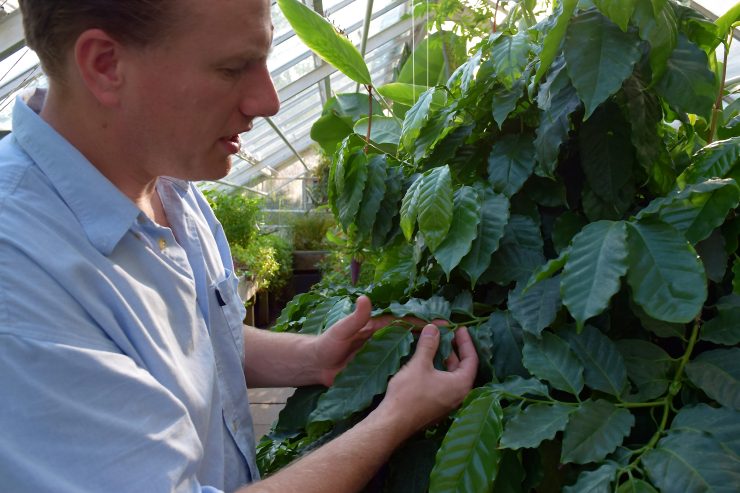
Reinout Havinga with one of the coffee plants at Hortus.
1) It was a whole 310 years ago that the traders of the Dutch East India Company managed to transport coffee from the Dutch colony of Java to the Netherlands. After what must have been a long, arduous sail, the plant wound up in Amsterdam, where it was cultivated in a hothouse, probably the best bet for re-creating the tropical monsoon climate in which coffee thrives. Compared to other major cities’ botanical exhibitions, the offerings at Hortus are modest. However, the raison d’être for its creation was vital: in 1638, the mayor established it as an herb garden for doctors and apothecaries seeking to save the city from a plague epidemic.
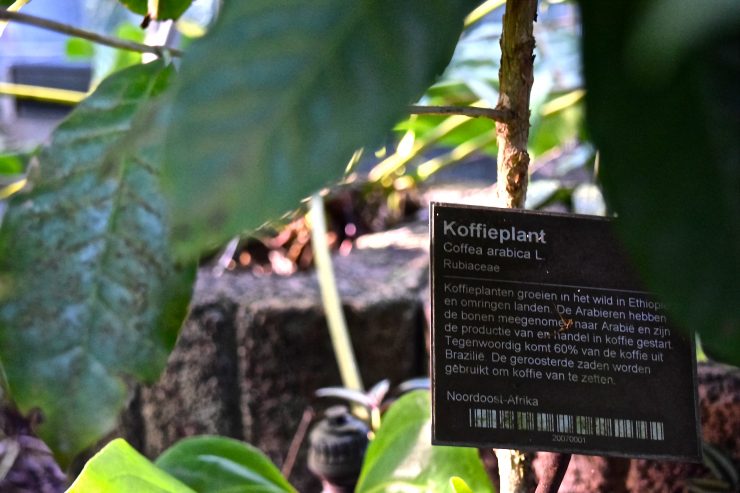 2) Hortus has no placard pointing out precisely where on the premises the first Amsterdam-grown coffee took root (something like the “Where Harry Met Sally…” sign at Katz’s Deli in New York City). Still, admirers of Coffea arabica can cozy right up to the modern-day species. In the Butterfly House, Havinga introduced me to a shrub so shiny-leafed and strapping, I wondered if it might grow right through the glass ceiling. Nearby, in the jungle-esque verdancy of the Three Climate Greenhouse, a smaller shrub appeared less glossy, though hearty enough in the partly shaded understory.
2) Hortus has no placard pointing out precisely where on the premises the first Amsterdam-grown coffee took root (something like the “Where Harry Met Sally…” sign at Katz’s Deli in New York City). Still, admirers of Coffea arabica can cozy right up to the modern-day species. In the Butterfly House, Havinga introduced me to a shrub so shiny-leafed and strapping, I wondered if it might grow right through the glass ceiling. Nearby, in the jungle-esque verdancy of the Three Climate Greenhouse, a smaller shrub appeared less glossy, though hearty enough in the partly shaded understory.
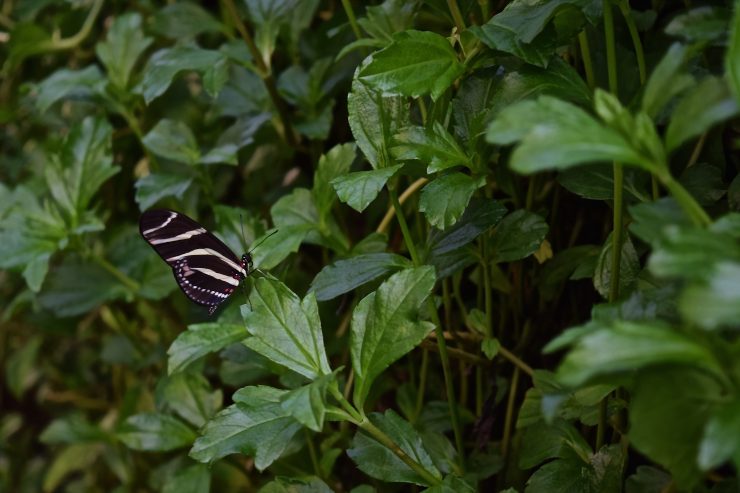
In the Butterfly House.
3) So is one of these star-turn bushes actual progeny of the Javan export from three centuries ago? Probably. “We know what happened with the coffee plant around 1700 in this garden, but we don’t know if the plant stayed here, alive in this garden, and it’s actually quite unlikely that it survived the ages here,” said Havinga. In fact, these days Hortus gets its coffee plants from a local nursery. However, Havinga says research shows that “any coffee plant that you find in cultures somewhere in Europe is likely to be a descendant of the coffee plant that moved through the Hortus,” which would imply that any coffee plant now found at Hortus “is a descendant of the [original] Amsterdam plant.” Venturing further back, he says, “It’s the most likely explanation for any coffee plant [presently] in the world: that it descended from the large plantations that started in the 19th century in Brazil. So it is quite likely that our [current] plant is coming from Brazil or from [another] coffee culture in the world and is a descendent of the Amsterdam plant—not that it survived here all the centuries, but that it survived in the tropics.”

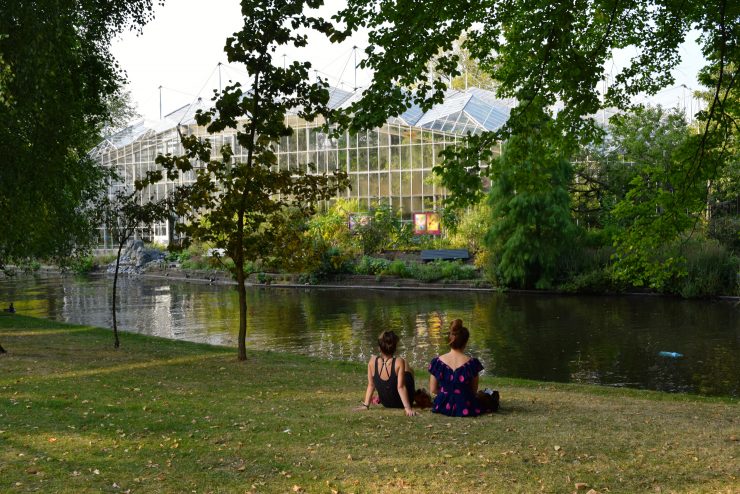
It’s nice to think of this as one of the most important coffee locations in the world.
4) As to how coffee got from Eastern to Western hemispheres, there are at least two different versions of the story. “One is that it was brought to Suriname by the Dutch themselves, and from Suriname to French Guiana, and then there was a Brazilian interference that took the plant to Brazil,” explained Havinga. “But the other one, the story you hear most often, is that it was given in a bouquet to Louis XIV.” Incorporated in Hortus signage and corroborated by various international sources (Mark Pendergrast’s scholarly tome included), this account cites passage of the plant from Dutch to French hands in 1714. From there, coffee was shipped on to France’s colonies in and along the Caribbean and, eventually, Brazil.
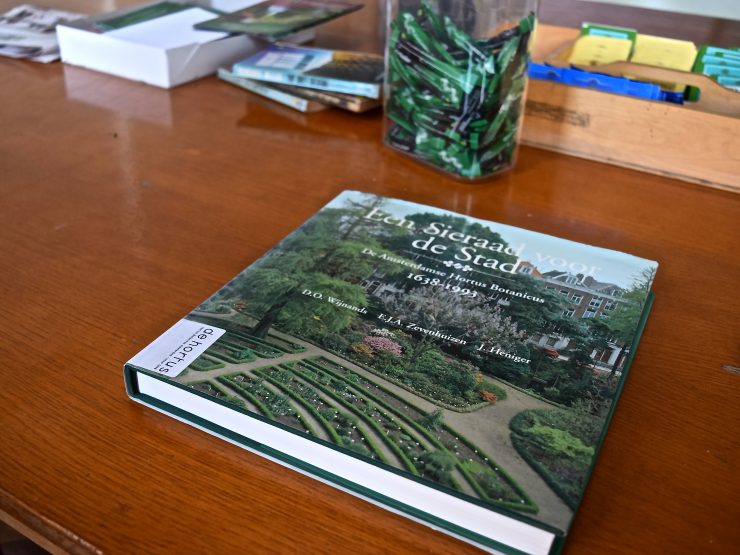
Een Sieraad Voor De Stad book
5) Finally, Hortus staff experimented with roasting and brewing the coffee beans that grew at their place of employment. According to “Een Sieraad Voor De Stad: De Amsterdamse Hortus Botanicus 1638-1993” (“A Jewel For The City: The Amsterdam Hortus Botanical Garden 1638-1993”), a book that chronicles the garden’s history, the first recorded incident of such seed-to-sip DIY coffee was in 1710. Hortus’s current plants do flower, but the fruits have not been plentiful enough for a meaningful yield, said Havinga, adding “It would, of course, be fun to harvest and grind our own coffee, but we never did so. We had a cacao bean, though, a couple years ago, which tasted very good.”
Hortus is located at Plantage Middenlaan 2a, Amsterdam. Visit their official website and follow them on Facebook, Twitter, and Instagram.
Karina Hof is a Sprudge staff writer based in Amsterdam. Read more Karina Hof on Sprudge.
The post Coffee’s History Blooms At Amsterdam’s Hortus Botanical Garden appeared first on Sprudge.

